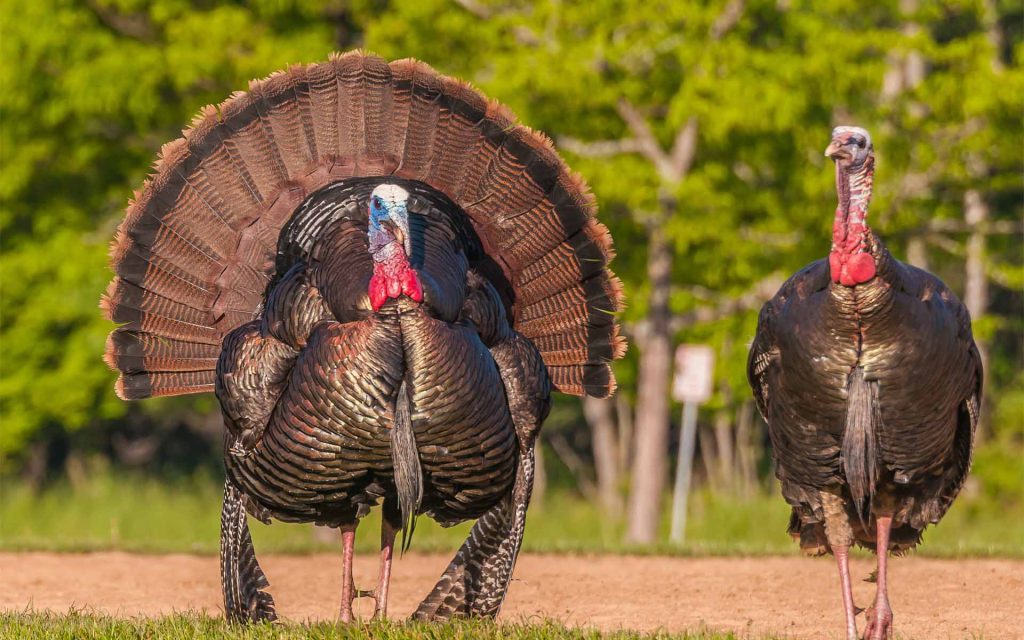Preparing for Spring Turkey Season
Spring turkey seasons are already underway in many states. But there’s always room for preparation and planning. Like hunting most species, the highest turkey hunter success rates are directly proportional to the amount of work done on the front end.
That’s not to say that turkey hunters can’t find success by just heading to the hills and stumbling into thunder chickens by dumb luck. Great hunts have happened by hitting up an area previously unknown and covering ground. Sometimes these spring turkey hunts are the most exciting!
However, if you go in more prepared, you stack the odds in your favor. When you have a defined plan, you have a base to work from. Then, if you must change gears, you can make educated, quick decisions without indecision weighing you down.
Spring Turkey Season Decisions
Before the season starts, you’ll have some choices to make. Will you hunt private or public land? Both? Will you hunt the youth season, general season, or apply for special season turkey permits?
Also, consider how you’ll hunt. Will you run and gun, hunt from a blind, or leave it open to use multiple methods?
Some of these decisions are time-sensitive and will have a lead time. Indeed, there are steps to take and deadlines to negotiate. So, plan accordingly.
Private Land or Public?
Are you looking into hunting private land? Private property can offer optimal spring turkey hunting with little to no pressure. Think of it – more patternable turkeys, birds that aren’t as spooky, and the ability to roost turkeys without someone else moving in on them in the morning. It’s turkey hunting at its best!
It’s no secret that there is something of a cold war between farmers and wild turkey populations making a living on farmer’s lands. An enterprising turkey hunter could capitalize on that hostility by knocking on some doors. Offering to trade farm help for filling turkey tags could be a mutually beneficial relationship.
You may hear a lot of “nos,” but all you need is one “yes.”
Don’t discount public land. There are certainly frustrations that can come with hunting state or privately held timberlands that are open to the public. But they have birds, and some areas can be gold mines during the regular season.
Youth, General, Or Special Spring Turkey Hunts
If you are the parent of a budding hunter, spring turkey is one of the most fun ways to introduce them to hunting. Most youth seasons occur in March and April, and then you can hit up the general season to continue filling your annual bag limit.
For instance, Washington’s youth season runs April 1 – 7, and the general season starts April 15. The total bag limit for the year is seven turkeys between the spring season and fall season. Turkeys taken by kids during the youth season count towards the annual total. In Minnesota, youth can hunt throughout the entirety of the season.
Youth season is a great excuse for getting the little ones out. And man – it is just plain fun calling in birds for the kids. The excitement on their faces when that big ol’ tom gobbles or comes running is a satisfaction that money can’t buy.
Spring Turkey Season Scouting
Narrowing down where the birds are before the spring season will give you a leg up on opening day. If you find turkeys within several days of the spring season opener, there’s a greater likelihood that the birds will still be there. Google Earth or Google Maps are great scouting tools to use initially. They’ll give you an overview of the land, plus adjacent properties like agricultural lands.
Once you’ve identified a handful of areas that make sense, then it’s time to get out in the field and ground-truth those spots. Sometimes things don’t look as great on-the-ground as they did from the Google aerial view. Then, other times, it is perfect.
You want to identify good habitat along with fresh sign and good food sources. Putting these puzzle pieces together to anticipate a flock’s movement is one of the fun parts!
According to Michigan DNR, wild turkeys prefer varied habitats with a mix of mature forest, brushlands, and open grassy areas. Their survival rate improves when the habitat has at least 30-50% mature forest cover.
That potentially means healthy wild turkey populations in those areas.
Throw in a reliable water source within a quarter-mile, and you can start putting together a picture of areas that fit the bill.
Turkey signs you should be on the lookout for includes droppings, tracks, wing drag marks, feathers, and possible roosting areas.
Hen droppings are usually in a small pile and are similar to geese. Tom’s droppings have the familiar “J” shape and are about two inches long. A tom’s droppings are very distinct from a hen’s, so it will be obvious.
Tracks are easily located in light mud, snow, or dirt and are roughly four inches long. They’ll have three long front-facing toes, and a smaller 1-inch toe facing back. Wing drag marks can also be found nearby if there are toms that have been strutting.
You may find feathers scattered around areas where turkeys have been roosting or dusting themselves. This is yet another small clue that birds have been through the area. It’s not a very useful piece of data by itself but combined with everything else, it gives you a fuller picture.
One sure way of finding roosting areas is to simply hang out within binocular range at a suspected roosting site and observe any birds that fly up around dusk. Look for big trees – thirty to hundred-foot tall ones. Sometimes the roosting area will be a solid stand of trees. Other times it could be a riparian area (habitat associated with streams or rivers). Riparian areas can be highly productive ambush spots in drier climates.
For example, in the high desert, you can have hundreds of acres of open landscape bordered by a riverine area with huge trees. This makes it very easy to zero in and locate potential roost areas, plus turkeys themselves.
Shooting Practice
You’ve gathered your gear and bought your hunting license and turkey tags. But there’s another important last step before you head to the turkey woods. That is, making sure your shotgun is patterned and sighted-in.
The easy way to do it is to grab yourself a pack of turkey head targets. Then, spend some time playing with different combinations of chokes and turkey loads. You can “bracket” your yardages shooting at 20 yards; then at 40 yards with different loads and choke tubes.
First, run your loads through a cylinder choke. Then repeat the process with an improved cylinder, modified choke, improved modified, and so on. Try for 20-25 pellets where the skin meets feathers in the head/neck area. Once you’re hitting that consistently at 20 and 40 yards, you’re ready to go.
Consider using a fiber-optic sighting system or a red-dot sight instead of just the bead. Of course, there’s nothing wrong with using the standard bead. It’s worked for hunters for generations. But a red-dot or fiber-optic sight will help with your accuracy, especially if your once-young-eyes are getting a bit hazy.
Now, get out there and enjoy the season! If you’re a landowner with a large wild turkey population, consider a hard-sided blind from Ambush Outdoor Products. A well-placed Ambush blind keeps you comfortable, concealed, and dry during rainy spring hunts. More time in the field means more opportunities for success.






